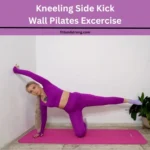In our modern lifestyle, a significant portion of our time is spent in a seated position, whether at a desk or in front of a screen for long periods. This prolonged sitting often results in unfavorable posture, characterized by a slumped or flexed stance. We’ve all experienced the infamous “cell phone posture,” a position that haunts us whether we’re sitting or standing.
As hours pass in this seated position, our back muscles labor to maintain proper alignment. Over time, however, these muscles succumb to fatigue, causing our bodies to slump, heads inclined forward. It’s a relentless pattern exacerbated by static positions at a computer or during prolonged TV viewing, wreaking havoc on our muscle strength and length.
The muscles in the back of our neck and trunk grow weaker and longer, while those in the front—the chest, shoulders, abdomen, and neck—contract, leading to stiffness and shortening. This unbalanced state perpetuates the cycle, even when we’re not sitting.
But here’s the good news—I’ve personally experienced the transformative effects of Wall Angels. This unique exercise routine not only strengthens the core but also elongates the muscles in the front of the body, relieving tension and promoting a deep, dynamic stretch. With a supporting wall, it’s a powerful tool to improve spinal health and break free from the clutches of poor posture.
Apart from this, there are some Wall Pilates Challenge that I have posted in which you will be able to know a lot.
What are Wall Angels Exercise
Wall angle exercise that stretches the upper back to the neck in one simple motion is also known as the “V” to “W” stretch. It gets its name from the position of the arms at the beginning and ending. The wall provides feedback when you place your back against the wall and helps to keep your arms in position and the spine neutral.
Working on upper body pushing movement exercises like the bench press can usually shorten your chest muscles (pectoralis major, pectoralis minor) and (latissimus dorsi) back muscles. This Causes incorrect posture and invites unwanted neck and back pain.
Research has shown that performing stretching exercises (wall angle) for four weeks consistently reduces chronic moderate neck and shoulder pain and improves individual function.
Additionally, If you sit most of the day or undergo upper body resistance training, this Wall Pilates Exercise will benefit you.
View this post on Instagram
Wall Angels For Posture
Wall angle is a favourable exercise for enhancing shoulder mobility and posture. Many Pilates masters and chiropractors use the Wall Angle exercise to stretch the neck, head, and upper back, and stretch the shoulders and open the chest.
Wall angles correct the 2 common problems associated with poor postural issues like Rounded shoulder posture (RSP) and Forward head posture (FHP).
Regular practice of Wall angle or Supported Roll-Down Exercise improves your posture concerns. It can play an essential role in maintaining good posture by strengthening the shoulders and upper back muscle groups.
Improved posture can provide various benefits, including reducing tissue stress and modifying the angle of joints to reduce pain.
However, some postural patterns are less amenable to change because they may not respond to wall angels exercise like those who have preexisting issues like scoliosis or hereditary Congenital kyphosis.
7-Benefits of Wall Angels
Here are the 7 benefits of angle exercise that will blow your mind:
1 Enhance Thoracic Spine Mobility
If you master wall angles, you will love these intense exercises and the super bendy spine that supports dynamic. The main benefit of wall angles is to deliver improved T-spine mobility and to provide you with an ideal body posture. However, depending on its difficulty, this exercise involves the best stretching of your mid to upper spine.
2 Develop A Good Posture
Wall angle exercises can correct your bad posture, such as rounded shoulders (RSP)and a forward head (FHP). If you want to fast-track posture improvements, incorporate this into your daily or weekly routine. It’s a win-win-win! For a person who wants to pull shoulders back while avoiding an arched back and maintaining a strong core.
3 The Best Pre-Workout Mobilization Move
Suppose you’re doing a workout that requires specific T-spine mobility, like squats, overhead pressing squats with dumbbells or any other lineup movement. In that case, you should add compulsory wall angels as a warmup exercise to loosen things up before you start.
4 Reduce Back and Neck Pain
Yes, it can help relieve your back and neck pain, but not directly. Wall Angle exercises indirectly work the neck by compressing and decompressing the mid-spine and upper back. It can create space in your vertebral joints, which creates a laxity in your spine and extends the neck.
5 Prevention of Shoulder Injuries
Wall angle exercises can help reduce your risk of shoulder strains and injuries by increasing the strength and mobility of the deep shoulder muscles. It may also be beneficial for people who engage in daily shoulder joint activities or activities that involve shoulder girth, such as swimming or throwing.
6 Strengthening of Postural Muscles
The Wall Angles exercise targets the postural muscles of your upper body, such as the deltoids, rhomboids, and trapezius. Working on these muscles and strengthening them keeps the person’s spine aligned and supported.
In addition, the wallangels also help in reducing risks such as discomfort and musculoskeletal problems.
7 Enhanced Shoulder Mobility
In wall angles exercise, the shoulder joints move in a wide range of motion. Which, if done daily, can increase your shoulder flexibility and mobility. Additionally, You can improve your shoulder mobility by adding modifications like arm eternal rotation.
Note: The wall angels benefits mentioned by Fitt and Strong are for your informational purposes only. This information does not indicate any medical advice or diagnosis.
7 Steps To Do Wall Angels Postural Exercise- Beginners, Intermediate
Have you ever wondered how to achieve the ideal posture without undergoing strenuous workouts? The answer lies in a simple yet highly effective Wall Pilates exercise known as Wall Angels. In this step-by-step guide, we’ll walk you through the process of performing Wall Angels, helping you unlock the benefits of improved alignment, stronger muscles, and reduced pain.
Step 1: Find Your Wall
Begin by standing with your feet approximately 6–8 inches away from the wall. Ensure your butt, back, shoulders, and head are in contact with the wall. This initial setup establishes the foundation for the exercise.
Step 2: Spine Alignment
Achieving a neutral spine is crucial for this exercise. Start by drawing your belly button toward your spine, and gently tuck your chin. This action creates the alignment needed for the subsequent movements.
Step 3: Pillow Support
If you find it challenging to get the back of your head to touch the wall comfortably, consider placing a small pillow behind your head. This minor adjustment ensures comfort while maintaining proper alignment.
Step 4: Raise Your Arms
Now, it’s time to reach your arms straight up and place them on the wall overhead. Aim to position the back of your hands in a “V” shape, mirroring the wall’s surface. If you encounter difficulties, adjust your alignment by stepping slightly further from the wall to resolve the issue.
Step 5: Bend Your Elbows
Gradually begin to bend your elbows as you slide your hands down the wall. Keep your head, trunk, and butt in constant contact with the wall throughout this movement.
Step 6: Lower with Control
As you descend, lower your arms only as much as you can while maintaining good posture without experiencing any pain. It’s perfectly normal to feel a stretch during this phase. At the lowest point, hold this position for a count of 5 before proceeding to the next step.
Step 7: Return to “V” Position
With precision and maintaining your alignment, return your arms to the “V” starting position overhead. This controlled movement is essential for re-establishing the ideal posture.
Repetition Is Key
Repeat this sequence for 5–10 reps, paying close attention to your muscles’ response. If you reach a point where your muscles can no longer sustain the postural alignment without pain, it’s advisable to stop and gradually increase the number of repetitions over time.
By mastering the art of Wall Angels, you’ll not only enhance your posture but also experience the tangible benefits of Weight Loss, a stronger core and improved spinal health. Make this exercise a regular part of your routine, and you’ll be on your way to a healthier, more aligned you.
Wall Angels Muscles Worked
Wall angles are mostly an upper body exercise that specifically works on your upper back postural muscles like the Deltoid, Rhomboids, and Trapezius.
Deltoid: The deltoid muscles are accountable for the abduction of the shoulder joint and help move the arms upward. By strengthening this muscle group with wall-angle exercises, you can improve your posture and shoulder mobility while reducing the risk of associated discomfort and injuries.
Rhomboid: The rhomboids contain the Rhomboid major and minor muscles that manage scapular retraction and promote proper posture and stabilization of the scapula.
Trapezius: The trapezius muscles respond specifically to scapular movements, such as elevation and depression. When trained with wall angle exercises, the trapezius’s middle and lower fibers help give your body a good arch.
Variations and Modifications for Wall Angels
As someone who has navigated the challenges of maintaining a healthy posture, I’ve come to appreciate the subtle art of wall angels. Often recommended for its spine-aligning benefits, this exercise can be a struggle for many.
It demands not just physical effort but also a keen understanding of one’s own body. Let me walk you through a modification that could significantly impact your practice.
Floor Angles

The journey to a stronger, healthier back often leads to the practice of floor angels, a grounded twist on the classic wall angels. As a fitness enthusiast with a keen interest in postural exercises, I’ve often found that many are struggling to maintain the neutral spine position that is crucial for this exercise.
The beauty of floor angels lies in their simplicity and the way they allow the back to lie face-up against the ground, making it easier to prevent any arching. This modification ensures that everyone, regardless of their flexibility or strength, can safely work towards increasing their shoulders’ range of motion.
By performing these steps on the ground, the undeniable comfort comes from knowing your spine is supported in its neutral position, allowing for a full stretch without discomfort from sitting against a wall.
The floor becomes an ally in the quest for spinal health, ensuring each movement towards reach and alignment is precise and beneficial.
Single-Arm Wall or Floor Angels

When it comes to enhancing flexibility and relieving tension along the spine, Single-Arm Wall or Floor Angels are a revelation.
The exercise, traditionally done with both arms, can be quite challenging, so modifying it to one arm at a time alleviates pressure and makes it significantly easier to send your arm overhead. This adjustment allows a more focused stretch, ensuring you can fully reap the benefits.
Whether practising against the wall or on the floor, the key is to alternate arms or perform several reps with one arm before switching to the other. It’s crucial to keep the lower back pressed firmly, which helps in maintaining a solid foundation throughout the entire movement.
This technique has been a game-changer in my routine, providing a targeted approach that respects the body’s limits while steadily pushing them.
Common Mistakes To Avoid
In my journey as a fitness instructor, I’ve witnessed countless instances where eager participants tackle the Wall Angel exercise with gusto, only to fall prey to the common mistakes that can rob the movement of its benefits.
The critical form point I emphasize is maintaining the back flat against the wall, which prevents the body from trying to compensate for stiffness in the shoulder muscles or chest. It’s a frequent sight to see buttocks drifting away from the wall as arms reach overhead, a clear indicator of needing more flexibility work.
Moreover, decreasing the range of motion rather than striving to reach high prematurely can avert the mistakes of arching the back or adopting a forward-head posture. The goal is a fluid movement—a harmonious dance of raising and lowering arms while maintaining hand and elbow contact with the wall, sliding smoothly without losing contact.
As we lower our arms during the lowering phase, it’s crucial to engage those core stabilization muscles to support the trunk, ensuring the entire movement remains controlled and effective.
Safety and Precautions
Practice Single-Arm Wall Angels First
Embarking on a workout journey, the wall angels have become a cornerstone of my sessions, but I always stress the importance of starting with single-arm movements.
This approach isn’t just about being cautious; it’s about intelligently preparing the spine for what’s to come. By gradually mobilizing the back with these warmup exercises, one avoids the shock of an intense stretch, instead proceeding to the full movement with care and attention.
Don’t Overdo Wall Angels
In my fitness classes, I emphasize the mantra, “start small and take it slow,” especially when trying a new move like wall angels. Rushing can lead to overstretching and the discomfort of a muscle cramp.
I advise to perform slow reps, initially at half your ability, arms halfway overhead, to prime the body. This careful approach avoids straining and preps you for more challenging extensions.
Foam Roll Your Back
After a session of wall angels, feeling a bit sore is normal—a sign you’ve been pushing your body beyond its usual comfortable range of motion with deep stretching.
Don’t worry; using a foam roller to roll out the upper back, lower back, and shoulders can help alleviate that muscle sensitivity. Just a few moments spent massaging the stretched muscles can make a difference.
Final Words
As we wrap up our exploration of wall angels, it’s clear that this exercise is a true gem in the realm of posture improvement and overall body wellness. By diligently performing wall angels, you engage key muscle groups like the chest, shoulders, abdomen, and back, not only strengthening them but also promoting better alignment and muscle lengthening.
Whether you’re looking to alleviate discomfort in your lower back and head, establish a more flat and balanced posture, or simply enhance your body’s awareness, wall angels offer a simple yet effective solution.
Having personally benefited from this practice, I can attest to the profound impact it can have on your physical well-being. So, make wall angels a regular part of your routine, and watch as your body becomes more resilient, more poised, and more in tune with itself, from your buttocks to your head.
What is a Wall Angel in Wall Pilates?
What are the mistakes for wall angels?
Can you do Wall Angels everyday?
Do Wall Angels help rounded shoulders?
Why are Wall Angels so hard?
What is the purpose of Wall Angels?
How many Wall Angels should I do?





